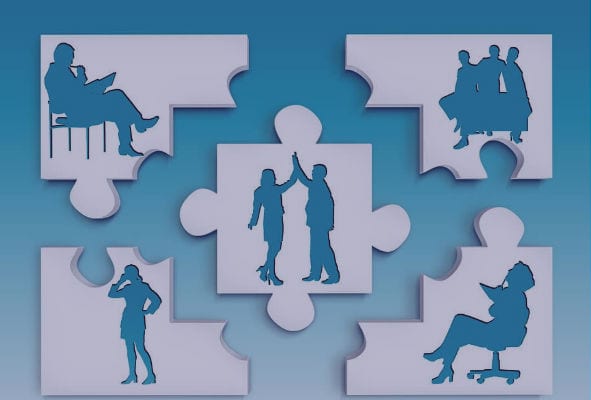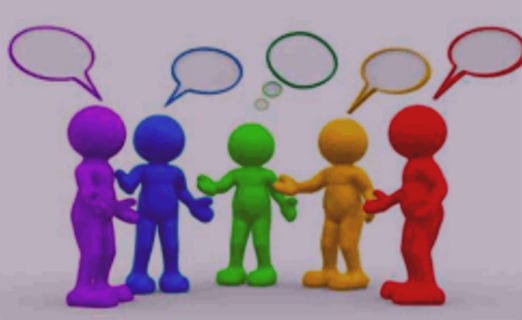Learning is one of the most important higher cognitive processes for the human being. From a young age, we are born with the ability to acquire information, and also to use it as it seems necessary to us. When being, or having a child, it is important to help in the period and task that learning requires. If you are looking to understand the things that happen around you, whether you are an adult or still a child, learning is what will lead you to find the answers to those questions posed.
When we talk about learning, it is also necessary to remember that you should not precisely carry it out on your own alone. Learning can and should also take place in a group environment.
Moreover, children learn best, in some cases, when they work in a group setting and are involved in collaborative learning. They will find a way to carry out the activities, and not only take care of their individual interests, but also the interests of the entire group, working together in order to solve the situations that may arise. Learn, working collaboratively with others. In this post we will discover ways to learn while collaborating with other people, and the advantages that this can represent for you or your child.
This learning, what is it?
When we talk about collaborative learning, we refer to a trend that is gaining new adherents among schools and primary schools in various countries. It is an education system in which teachers can leave their students tasks and tasks to be carried out in pairs or in a group, and in this way they alleviate a bit the burden of carrying out the tasks in a way individual.
At a time when we have only recently realized that homework is becoming less necessary and more harmful to our children, these new trends emerge that allow us to move forward and enter the new eras.
Although some time ago, and even now, students were sent to do homework, either in the classroom or at home, today it has been shown that homework is rather a nuisance, and that the tasks must be carried out within the same study area.
In these cases, what many schools and educational establishments have chosen to do is send the children to do their work in groups, and in this way they not only reduce their burden, but also teach them to work cooperatively.
It is generally used among students between 7 and 15 years old, and given that cultural integration is increasing more and more in schools and secondary schools, it is very useful for children to integrate with their peers of other races, religions and cultures and thus exercise tolerance in the best possible way.
Collaborative learning characteristics
If you want to study the characteristics of this type of learning, you must study it through its approach, since collaborative learning has characteristics such as:
- It responds to the sociocultural approach, and the knowledge is discovered by the students and transformed into concepts with which they can relate. It is then rebuilt, and expanded through new learning experiences.
- Learning is structured by a teacher, however, the task of learning is left to the student.
- Requires a more advanced preparationa by the teacher to be able to work with their students.
- This learning method changes the status of the teacher himself, as he goes from being an expert to delegating to his students, who will carry out the work, turning the teacher into another apprentice.
- Scholars see this system as a shared learning method between teacher and students, in which both can, and should, learn.
Benefits of this type of learning
When we talk about collaborative learning and we notice that every day it gains more followers, we cannot help but wonder: what makes it so special? So that we can understand more about this learning method, and apply it if possible in schools and secondary schools, we will study some of its advantages:
Allows you to combat student anxiety
Many of us knew the archaic and ancient system of teaching, in which the students (and perhaps ourselves) were intimidated by some imposing professor, who taught us with the face of few friends; especially in primary school, because at this age children are more impressionable. This system allows children, being the ones who are integrated into teaching, to gain confidence and increase their self-esteem.
Develop independence
As can be seen, once students get to work with this method they can avoid, when they have a doubt or need something, ask the teacher, because their classmates will be able to be solicitous when answering questions and helping others. . This helps students to depend less on the figure of the teacher, and allows them to generate some independence from the time they are children.
Contributes to a positive interdependence
When we talk about a student group, it is not a secret that there will be individuals better or worse prepared than others. Collaborative learning allows students who are a little behind the others to work with those who, in terms of classes, are in charge, those who are more advanced, and these will help them as much as they need to so that they catch up. . In this way, a positive interdependence is generated in the classroom.
Individual responsibility
When working with this system, regardless of whether the work is carried out in a group, each student will have the opportunity to carry out their work individually within the needs of the group, that is, each student will have a task within the joint work to be carried out. At the same time, these tasks must be on an equal footing for everyone, and have the same prominence.
Optimizes teaching
Since overcrowded classes have reduced the existing ratio between teacher and student, collaborative learning is designed to allow schools to maximize teaching with the same amount of media as previously available. This learning allows the same students help others, so that the teacher-student ratio increases exponentially.
Enhance critical thinking
When working, and as long as they do it collaboratively, developing their skills, students will be able to express their own thoughts, and at the same time develop new thoughts based on group discussion and debate. In this way a new generation of thinkers is generated.
Improve cultural tolerance
Today societies are constantly changing, and thanks to this, schools have been filled with a cultural diversity that had never been seen before, and with which we would never have dreamed of years before. Today we find ourselves in the need to teach our children, not only to tolerate, but to value these cultures. Collaborative learning promotes an environment of respect and equity in which integration not only can, but must be an important basis when working. In this way we develop an intercultural environment for our children.
Differences between cooperation and collaboration
Once we talk about collaboration and cooperation, it will be a bit difficult to discover or identify the differences that can occur between one and the other. Among scholars, they have reached a consensus regarding this issue, and have come to the conclusion that the structuring that exists in these cases by their teachers is important.
If we talk about a task in which teachers are constantly structuring and guiding their students, this activity will be cooperative; if instead students can do their homework with greater autonomy And without depending too much on the teacher in charge, they will be working collaboratively.
To finish
Due to the advancement of times and the need that we have to move with the passage of modern times, it is important to take into account the new learning methods that are appearing. In this case, this particular method can be very useful, because in these times of overcrowding we can find classrooms more crowded every day, and we can also see teachers stressed by this issue.
If we take this method to work, we can reduce the burden, not only on students, but also on teachers, and that way we can work better in an educational unit and improve significantly when it comes to the education of our children.

